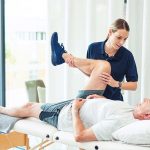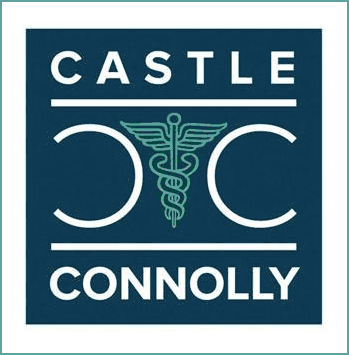Medically Reviewed by Angelo Ciminiello, M.D.
If you’re in midlife and suddenly dealing with aching shoulders, stiff hips, or unexpected joint pain, you’re not imagining things—and you’re not alone. Menopause brings more than just hot flashes and mood shifts. For many women, it also ushers in discomfort in the joints, particularly in the shoulders and hips. Conditions like frozen shoulder and hip stiffness can make everyday movements challenging, from reaching overhead to getting out of a car. In this guide, we’ll explore why these issues are so common during menopause, what’s happening inside your body, and most importantly, what you can do to find relief and support.
Why Frozen Shoulder Is So Common During Menopause
Frozen shoulder—also called adhesive capsulitis—is a condition that causes stiffness, pain, and limited movement in the shoulder joint. It tends to come on gradually, starting with a dull ache that worsens over time, eventually making it hard to lift your arm, reach behind your back, or even get dressed comfortably.
So, why does this happen so often to women in midlife? One major reason is hormonal change—specifically, the drop in estrogen that comes with perimenopause and menopause. Estrogen plays a key role in keeping joints and soft tissues healthy. It helps maintain flexibility, supports joint lubrication, and keeps inflammation in check. When estrogen levels decline, the body becomes more prone to inflammation, and connective tissues (like the capsule surrounding the shoulder joint) can become less elastic and more vulnerable to thickening and tightening.
Add in everyday wear and tear, stress, or even small injuries that may have gone unnoticed, and it’s easy to see how frozen shoulder can develop. It’s not about doing something wrong—it’s often the result of a perfect storm of factors that many women experience during this stage of life, including:
- Hormonal shifts
- Aging tissues
- Increased inflammation
Together, these changes can set the stage for joint issues like frozen shoulder.The good news? It’s treatable—and you don’t have to push through the pain alone.
How Hormones Affect Joints and Tissues
Your hormones—especially estrogen—do more than you might think when it comes to joint and tissue health. Estrogen isn’t just about reproductive health; it also helps keep your joints moving smoothly and your tissues flexible.
Here’s how: estrogen supports the production of collagen, a key protein that helps maintain the strength and elasticity of your tendons, ligaments, and cartilage. It also plays a role in keeping the fluid inside your joints balanced, so your bones can glide smoothly without pain or stiffness. When estrogen levels start to drop during perimenopause and menopause, those protective effects begin to fade.
So if your joints suddenly feel creaky or you’re dealing with more inflammation than usual, your shifting hormones may be part of the reason. Other factors—like age-related wear and tear, decreased physical activity, nutritional deficiencies, or even underlying conditions like osteoarthritis—can also play a role. Understanding the connection between these factors is the first step toward finding relief and feeling better.
Stages of Frozen Shoulder: What to Expect
Frozen shoulder doesn’t happen all at once—it comes on in stages, and understanding what each one looks like can help you manage the symptoms and know what to expect.
1. Freezing Stage
This is the first phase, when pain starts to set in—often slowly and without a clear cause. You might notice that your shoulder feels stiff or sore, especially when you reach overhead or behind your back. Over time, the pain gets worse, and your range of motion starts to shrink. This stage can last anywhere from 6 weeks to 9 months.
2. Frozen Stage
In this phase, the pain may start to ease, but stiffness becomes the main issue. Your shoulder may feel stuck or locked; even simple movements like brushing your hair or fastening a bra can be tough. Daily activities may become more frustrating, even if the pain isn’t as sharp. This stage can last 4 to 6 months.
3. Thawing Stage
Finally, the shoulder begins to loosen up again. Movement starts to return gradually, and the stiffness begins to fade. This stage can take 6 months to 2 years, depending on the person. With time—and sometimes with physical therapy—most people regain full or near-full motion.
While frozen shoulder takes time to resolve, there is light at the end of the tunnel. Understanding the stages can help you stay patient and proactive about your care.
Menopause and Hip Pain: The Overlooked Connection
When people talk about menopause, they often focus on hot flashes, sleep trouble, or mood changes. But here’s something that doesn’t get talked about enough: hip pain.
If your hips have started to feel stiff, sore, or achy during perimenopause or menopause, you’re not imagining it—and you’re definitely not alone. Like with frozen shoulder, hormonal changes play a big role in what’s happening.
As estrogen levels decline, the tissues around your joints—including the hips—start to lose some of their flexibility and strength. Estrogen also helps maintain joint lubrication, so when it dips, those smooth, gliding movements can become harder and more uncomfortable. Combine that with the natural aging process and an increase in inflammation, and it’s easy to see why hip pain and stiffness often show up during this stage of life.
You might notice it when you first get out of bed, after sitting too long, or even when trying to exercise like you used to. Understanding the connection between hormones, aging, and inflammation is the first step toward finding relief and getting back to moving comfortably.
Common Hip Issues Linked to Menopause
So what exactly is going on when your hips start acting up during menopause? Here are a few of the most common culprits—nothing scary, just helpful to know:
Hip Bursitis: Around your hip joint are small, fluid-filled sacs called bursae that cushion your bones and help reduce friction. With hormone-related inflammation, these sacs can get irritated or swollen, causing a sharp or aching pain, especially when you move or lie on that side.
Tendinitis: Tendons are the thick cords that connect muscle to bone, and during menopause, they can become less flexible and more prone to irritation. Tendinitis in the hip area often shows up as a deep ache or burning pain, especially after activity or long periods of sitting or standing.
Reduced Range of Motion: You might notice that you just don’t move like you used to. Hormonal changes can lead to stiff joints and tight muscles, making it harder to bend, twist, or even walk comfortably. It’s not about getting older—it’s about how estrogen supports joint health, and what happens when those levels shift.
How Menopausal Changes Disrupt Daily Life
Let’s be honest: joint pain and stiffness don’t just show up in the doctor’s office—they follow you through your day.
Frozen shoulder can make it tough to reach into the cupboard or put on a coat. Hip pain might slow you down when you get out of bed, go upstairs, or stand for long periods. Even sleeping can be a challenge if the pain keeps you tossing and turning at night.
Beyond the physical discomfort, there’s the emotional toll—feeling frustrated, tired, or like your body just isn’t cooperating the way it used to. These changes can make your daily routine feel harder than it needs to be.
But here’s the thing: you’re not stuck. There are real treatments, exercises, and support systems that can help you feel more like yourself again—and you don’t have to figure it out alone.
How Doctors Diagnose and Treat Frozen Shoulder and Menopausal Hip Problems
If you’re dealing with joint pain during menopause—especially in your shoulders or hips—it’s important to know that help is out there, and you don’t have to just “live with it.” At OrthoConnecticut, our experienced orthopedic specialists take a thoughtful, personalized approach to diagnosing and treating these issues so you can get back to feeling your best.
Diagnosis Starts with Listening
Your care team will begin by talking with you about your symptoms—when they started, what makes them worse, and how they impact your daily life. From there, they’ll do a physical exam to check your range of motion, pain points, and overall joint function.
Imaging for a Clearer Picture
Your doctor may recommend an X-ray, MRI, or ultrasound to get a better look inside the joint. These tools help rule out other causes (like arthritis or a tear) and confirm conditions like frozen shoulder or bursitis. At OrthoConnecticut, we use advanced imaging to get the most accurate diagnosis and guide your treatment plan.
Your Treatment Options
The good news? Most shoulder and hip issues linked to menopause can be managed without surgery. Treatment options often include:
- Medications: Anti-inflammatories to reduce swelling and pain
- Physical Therapy: Targeted exercises to restore flexibility, strength, and motion
- Injections: Cortisone or other joint injections to ease inflammation and discomfort
- Surgery: Reserved for severe cases that don’t improve with other treatments
Lifestyle Tweaks That Really Help
While medical treatments can go a long way, small changes to your daily routine can also make a big difference in easing joint pain and stiffness—especially during menopause. At OrthoConnecticut, we often encourage patients to try a few simple, sustainable habits that support joint health and overall well-being.
Move Gently and Often
Gentle stretching and low-impact exercises like walking, yoga, or swimming can help keep joints mobile and muscles strong. If you’re dealing with a frozen shoulder, guided physical therapy is key. For hip stiffness, targeted stretches and strengthening exercises can improve stability and range of motion. The important thing is to keep moving—but in a way that’s kind to your body.
Eat to Fight Inflammation
Your diet can help reduce inflammation, which plays a significant role in joint discomfort. Try incorporating anti-inflammatory foods like leafy greens, berries, salmon, nuts, and olive oil. Reducing processed foods, added sugars, and refined carbs can also make a noticeable difference over time.
Manage Stress and Get Rest
Stress can worsen pain, and poor sleep can make it harder for your body to recover. Activities like meditation, deep breathing, or even just taking a walk outdoors can help lower stress levels. Try to prioritize rest and aim for consistent, high-quality sleep—your joints will thank you.
Will Hormone Therapy Make a Difference?
Hormone Replacement Therapy (HRT) is often discussed as a way to relieve common menopause symptoms like hot flashes and mood swings, but what about joint pain?
There’s growing interest in how estrogen therapy might help reduce inflammation and improve joint comfort, especially since estrogen plays such a big role in joint health. Some studies suggest that HRT could help ease pain in the hips, knees, and shoulders for certain women.
That said, it’s not a one-size-fits-all solution. Research is still ongoing, and HRT isn’t right for everyone. The decision to try hormone therapy depends on your overall health, risk factors, and personal preferences.
At OrthoConnecticut, we work closely with your whole healthcare team to ensure your treatment plan is safe, effective, and tailored to you. Whether or not HRT is part of that plan, there are plenty of other options to help you move more comfortably through menopause and beyond.
Caring for Body and Mind During Menopause
Menopause affects more than just your body—it touches nearly every part of your life, including your emotional well-being, energy levels, sleep, and even how you cope with pain. At OrthoConnecticut, we believe that caring for your joints also means caring for the whole you because everything is connected.
Stress and poor sleep can make joint pain feel worse, especially during menopause, when your body is already adjusting to significant hormonal changes. A restless night or a particularly stressful day can amplify inflammation and heighten your pain sensitivity, making symptoms like frozen shoulder or hip stiffness even harder to manage.
The good news? Doing gentle yoga, mindful movement, and breathwork can help ease physical tension and emotional stress. Even just 10–15 minutes a day of stretching or guided meditation can reduce stiffness, support relaxation, and improve your mood. These aren’t just “nice-to-haves”—they’re real tools that support your body’s healing process.
Building a Support System
No one should have to navigate menopause alone. Whether you’re struggling with joint pain, sleep disruptions, or just trying to adjust to this new chapter, having the right support can make all the difference.
Start by talking to your doctor or orthopedic specialist—at OrthoConnecticut, we’re here to listen, guide, and treat with compassion. We also encourage patients to connect with others going through similar experiences. That might mean joining an online menopause support group, talking to close friends, or finding a local wellness community focused on women’s health.
Steady Changes, Real Relief
Menopause may bring unexpected changes, but you’re not powerless, and you’re not alone. With the right information, care, and support system, you can find relief from joint pain and start feeling like yourself again.
At OrthoConnecticut, we’re here to help you make small, steady changes that lead to real results—so you can move more freely, sleep more soundly, and live more fully. Whether it’s shoulder stiffness, hip discomfort, or something in between, we’re ready when you are.
Let’s get you moving forward—together



















